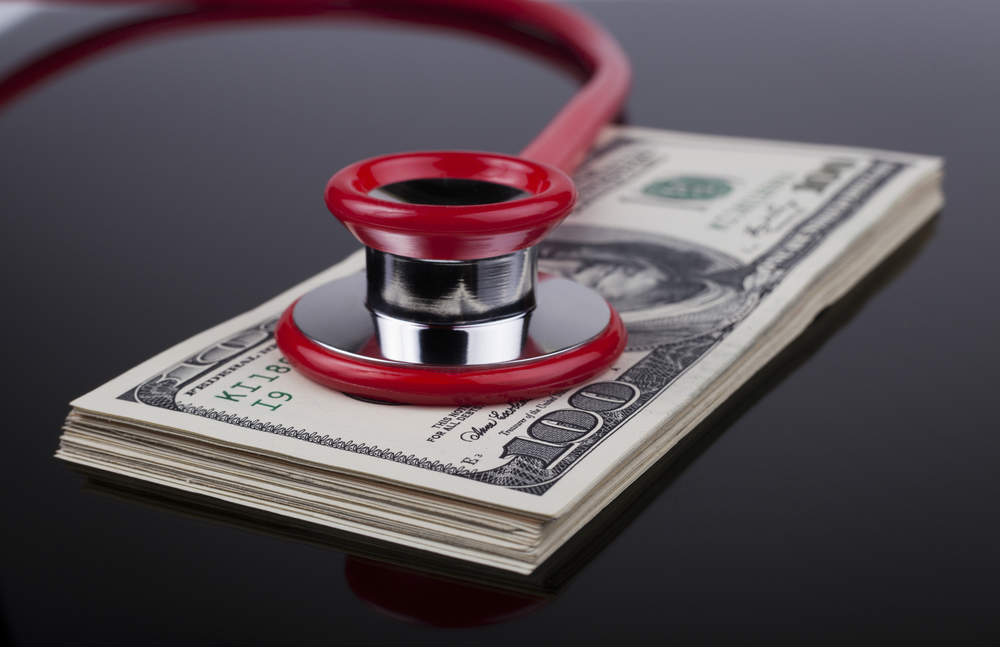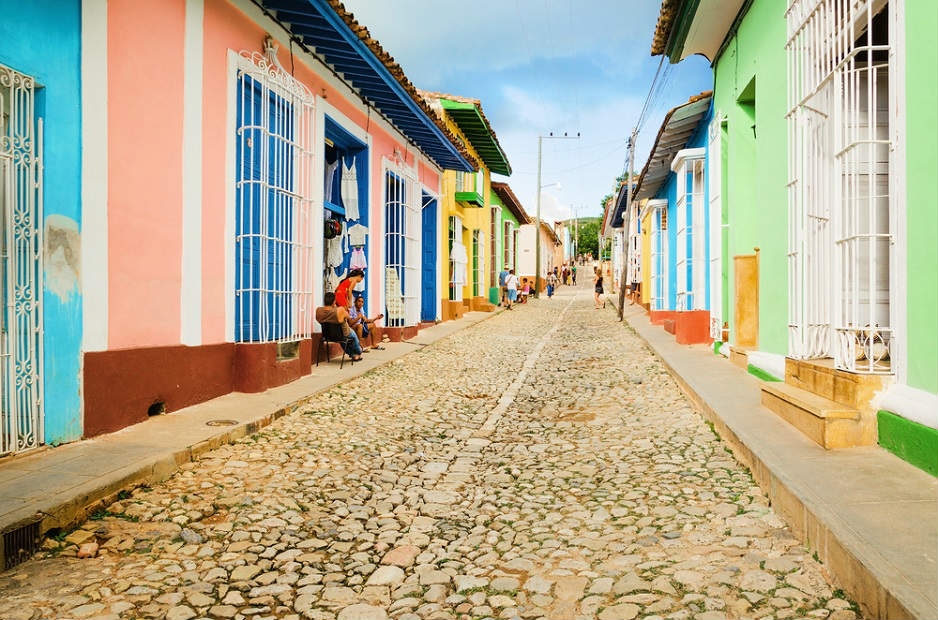Cuba’s high-quality, low-cost health care system makes it an attractive destination for medical tourism and biotech.
Routinely touted as the greatest achievement of the Cuban Revolution alongside universal education, Cuba’s health care system has extended beyond the island’s shores to represent one of the country’s biggest exports. Professional services carried out by Cuban doctors and nurses — who number some 37,000 working in 77 countries — are generating foreign exchange to the tune of $8 billion a year, Cuban officials say.
Cuban doctors and nurses are dispatched in “medical brigades” to far-flung countries ravaged by war and disease that are ill equipped to face humanitarian crises without external support, including earthquake-shattered Haiti and Ebola-stricken Liberia.
Cuban health workers are also sent to nations in Africa, Asia, Latin America and the Caribbean that lack sufficient medical professionals to meet their own needs. These countries compensate Cuba with oil (in the case of Venezuela), good-will and cash. Venezuela’s late president, Hugo Chavez, signed an agreement with Fidel Castro in 2000 to fund 43 medical centers in Cuba that attend to Venezuelan patients free of charge. Cuba, meanwhile, stations 31,000 medical professionals in the South American country and receives oil in return.
Cuba has a long tradition of training students from across the world in 16 medical schools scattered across the island. These students have typically been sponsored by United Nations programs or by their home governments, or are recipients of scholarships granted directly by the Cuban government. Even American citizens from low-income communities have been offered scholarships to study at Cuban medical schools, in exchange for a commitment to return to practice in underserved communities.
The nation’s medical facilities are, by and large, better equipped than hospitals in neighboring countries of the Caribbean, and with modest investment, observers say, the country could attract more students and trainees from hospitals and managed care providers in the United States.
If there were any doubt about the level of training provided in the country’s medical institutions, foreign dignitaries don’t share it; many frequently seek out Cuban doctors, some of whom are also professors at the country’s medical schools, to perform specialized procedures.
Rodrigo Álvarez Cambras, director of the International Orthopedic Complex Frank Pais on the outskirts of Havana, for example, was asked to operate on Saddam Hussein’s spine and treated Iraq’s late leader over the course of nearly two decades. Álvarez notes that US policy is encouraging the same brain drain of Cuban doctors today as it did after the 1959 revolution, when about half the country’s 6,000 doctors fled. Despite the fact that the number of doctors on the island has multiplied more than tenfold since the start of the revolution, Álvarez says he doubts Cuba will willingly supply medical professionals to the US market as long as doctors from the country are being actively encouraged to defect under the Cuban Medical Professional Parole (CMPP) Program.
The CMPP program was established in 2009 by the US State Department and Department of Homeland Security. It allows Cuban doctors, nurses, paramedics, physical therapists, lab technicians and sports trainers working in third-world countries to apply for US entry, simply by proving their Cuban citizenship and medical credentials at any US embassy or consulate.
Asked if he could fathom a time when Cuba would willingly send medical personnel to the US, Álvarez says that cooperation in medical services is conceivable. “We don’t have anything against the American people,” he notes, “but Cuba doesn’t have enough doctors to meet all the requests for medical assistance it already receives from overseas.” Despite warming political relations, Álvarez cites Raul Castro’s January 28 speech at the Community of Caribbean and Latin American States summit, which outlined several conditions for the normalization of bilateral relations between the US and Cuba, including lifting the embargo and a return of Guantanamo.
The Proximity Advantage
Several hospitals in the US today send health care workers for training to countries as far away as the Philippines, according to Steven Ullmann, a professor at the University of Miami School of Business Administration and director of the Center for Health Sector Management and Policy.
Given its proximity to the US, where there is a shortage of Spanish-speaking primary care physicians and nurses, Cuba makes sense as a training ground and reservoir of medical professionals, notes Ullmann, who is co-author of the book, Cuban Health Care: Utopian Dreams, Fragile Future. He points to Cuba’s focus on preventative care and its decentralized system of doctors (58.2 per 1,000 people), who are based in each neighborhood and are responsible for their immediate communities, as the recipe for the country’s low infant mortality rate (4.2 deaths per 1,000 live births) and relatively high life expectancy of 78.6 years. At the same time, Ullmann notes that Cuba is a recipient of humanitarian aid in the form of medications and basic medical supplies and equipment from European donors and US-based support groups.
Cuba has a two-tiered health system, where the general population is served by public facilities in which care is provided free of cost, and tourist hospitals managed under the state-owned company Servimed cater to paying visitors — most of them from countries with lower standards of care and poorer facilities, or simply with higher costs. Clinica Central Cira Garcia in Miramar is chief among the facilities that accommodate visitors traveling to Cuba for medical treatment. Services offered to visitors range from treatment for the degenerative eye condition retinitis pigmentosa to orthopedics, dentistry, diagnostics and cosmetic surgery. The country has hosted several high-profile patients, like Argentine footballer Diego Maradona, who sought treatment for drug addiction in 2000, Ecuadorean president Rafael Correa and Hugo Chavez, who spent his final months fighting cancer under the care of Cuban oncologists in 2012-13.
The country is well positioned to take a significant piece of the global medical tourism pie, especially as travel restrictions ease in the US, says Ullmann. He adds that the two-tiered system is consistent with what many developed markets, like the United Kingdom, offer their own citizens under parallel public and private insurance schemes. With Cuba’s mandatory coverage for travelers to the island since 2010 underwritten by state insurance company Seguros Generales de Cuba, the country already has a framework for up-selling services covered under elective insurance policies.
Getting Ready for Prime Time
More than 1 million Americans travel overseas to seek medical care each year, to destinations like Costa Rica, Colombia, India, Israel, Malaysia, Mexico, Singapore, South Korea, Taiwan, Thailand, Turkey, Brazil and Argentina. Increasingly, global insurance companies offer coverage that spans several international markets. A trend toward higher deductibles in the US encourages travel for routine procedures and diagnostics, Ullmann points out.
Patients Beyond Borders, a resource center and publisher of consumer information on international health travel, estimates the global medical tourism market to be worth between $38.5 billion and $55 billion, including ancillary services. It’s a market growing upwards of 15% a year, Ullmann says, and one Cuba could easily tap more.
Patients Beyond Borders founder and author Josef Woodman says Cuba has the potential to be an ideal medical tourism destination for patients coming from the US, but he cautions that the country will need to make significant investments in infrastructure and technology “before it is ready for prime time.”
To compete with the most developed international medical tourism markets, such as Singapore, Cuba will need more modern equipment and the ability to cater to English-speaking patients, if it hopes to attract a large slice of the American market. Patients seeking world-class facilities at a fraction of the cost already have many options, Woodman notes. He points to Health City, the brainchild of renowned Indian cardiologist Devi Prasad Shetty, as an example of where Cuba could take its medical tourism product.
Health City Cayman Islands is an hour and 20 minutes by plane south of Miami. It’s a high-tech tertiary care hospital that opened in March 2014 with multidisciplinary clinical and diagnostic services in cardiology, pulmonology and orthopedics. The facility is set to grow its bed count from the current 104 to become a 2,000-bed facility in the next 15 years.
Health City is a 30/70 joint venture between Narayana Health, which has 26 hospitals and a total of 8,000 beds throughout India, and US-based Ascension Health, a Catholic institution with 18,000 beds in 23 states. Chandy Abraham, head of medical services and facility director, says Health City chose Grand Cayman for its first facility outside India because of the proximity to the US market and the incentives offered by local authorities.
Among the concessions granted by the Cayman government was recognition of Indian medical qualifications within the Health City facility. Health City accepts insurance coverage from local insurers and is in talks with US insurers like Blue Cross Blue Shield, notes Abraham. One important milestone for the facility will be accreditation by the US-based accreditation organization Joint Commission International, which Abraham expects will be awarded by May and lead to a sharp increase in patients visiting from the United States.
“Following that model, for the short–haul patient out of the US, whether for the uninsured or underinsured patients, elective or experimental treatments not yet approved by the FDA — all of those are possibilities” Cuba could explore, says Woodman. Cuba will also need to present its records for accreditation if it is to have traction in the U.S. market, Abraham points out, and the qualifications of its medical professionals would need to be recognized, at least within the confines of cooperating institutions, to practice in the US. Álvarez says that because their medical qualifications aren’t recognized in the US, many Cuban physicians who abandon their overseas posts under CMPP end up stepping down in rank and working as nurses or assistants to specialized physicians rather than as doctors themselves.
Expanding Biotech
Beyond the contribution Cuban medical professionals currently make and could make in the future to global health care within and beyond the nation’s borders, the country is keen to grow its fledgling medical biotech and pharmaceutical industries. While foreign ownership is prohibited in health services, drug development is not subject to such restrictions, and Cuba is actively seeking foreign capital and overseas marketing partners to advance its pipeline of anti-cancer and cardiovascular agents.
The Center for Molecular Immunology (CIM), located 20 minutes west of Havana’s city center in a modern complex of labs and warehouses, was born out of Cuba’s National Institute of Oncology and Radiology, and it has a robust pipeline of products it aims to take to market. Its star drug, Nimotuzumab, an anti-epidermal growth factor receptor (EGFR) humanized monoclonal antibody, is being marketed internationally via joint ventures in Singapore and China and by wholly owned foreign subsidiaries, following successful clinical trials on brain tumors and head and neck tumors run in Canada, China, Cuba, Germany and India.
Normando Iznaga-Escobar, commercial manager at CIM’s marketing unit, CIMAB, says Cuba looked abroad for international partners as soon as the country passed legislation promoting joint ventures with foreign entities in 1994. Cuba now has development programs overseas advancing 40 clinical tests in 24 countries and has registered more than 1,400 patents abroad.
CIM and CIMAB partnered with YM BioSciences in Canada, which invested more than $80 million to carry Nimotuzumab through phase III clinical trials. The drug was licensed by the FDA for clinical studies in 2006, a milestone for a product Iznaga-Escobar says is now being sold in 18 countries and contributing to revenues of $1 billion a year in Cuban pharmaceutical exports.
YM BioSciences was acquired by Giliad Sciences in 2013, and Singapore-based Innokeys acquired its stake in the joint venture with CIMAB. Iznaga-Escobar is now chief scientific officer for the Singapore-based company, which holds the license to market Nimotuzumab in Canada, the EU, Japan, Australia, New Zealand and several other Asian markets.
CIMAB wants to attract multinational pharmaceutical companies to invest in three manufacturing joint ventures that have been allocated lots in the Special Development Zone of Mariel, 60 kilometers west of Havana.
 Brazil’s Odebrecht Infrastructure Latin America completed construction of the International Container Port of Mariel in early 2014. The deep-water port is capable of accommodating post-Panamax vessels, and the adjacent Special Economic Zone aims to compete with the most important logistics hubs in the region, and foster a variety of industries, with a common goal of substituting imports with locally produced food, packaging, pharmaceutical and construction products, among others.
Brazil’s Odebrecht Infrastructure Latin America completed construction of the International Container Port of Mariel in early 2014. The deep-water port is capable of accommodating post-Panamax vessels, and the adjacent Special Economic Zone aims to compete with the most important logistics hubs in the region, and foster a variety of industries, with a common goal of substituting imports with locally produced food, packaging, pharmaceutical and construction products, among others.
While Iznaga-Escobar is optimistic about the prospects for Cuba’s medical biotech industry, he notes that Nimotuzumab’s main patent expires in 2017, and CIM needs to continue developing its pipeline to put new products through clinical trials and on the market. In addition to Nimotuzumab, the most promising drugs CIM aims to develop further in partnership with international biotech firms are EGF cancer vaccines for the treatment of advanced non-small cell lung cancer Vaxira and CIMAVax, Iznaga-Escobar says.
Talks are ongoing with several multinational pharmaceutical companies, according to Iznaga-Escobar. Several other entities also held under BioCubaFarma are vying for foreign capital to establish or ramp-up production of generic drugs, contraceptives and injectable agents, both to substitute for imports and grow hard currency exports. In these ventures and all activities related to medical biotechnology, the Cuban government insists on retaining majority ownership, Iznaga-Escobar notes.
*[This article was originally published by Fair Observer’s content partner, Knowledge@Wharton, and was produced in collaboration with TTR – Transactional Track Record.]
We bring you perspectives from around the world. Help us to inform and educate. Your donation is tax-deductible. Join over 400 people to become a donor or you could choose to be a sponsor.
The views expressed in this article are the author’s own and do not necessarily reflect Fair Observer’s editorial policy.
Photo Credit: Piotr_Pabijan / Merc67 / Michael Jung / David Orcea / Anna Jedynak / Shutterstock.com
Support Fair Observer
We rely on your support for our independence, diversity and quality.
For more than 10 years, Fair Observer has been free, fair and independent. No billionaire owns us, no advertisers control us. We are a reader-supported nonprofit. Unlike many other publications, we keep our content free for readers regardless of where they live or whether they can afford to pay. We have no paywalls and no ads.
In the post-truth era of fake news, echo chambers and filter bubbles, we publish a plurality of perspectives from around the world. Anyone can publish with us, but everyone goes through a rigorous editorial process. So, you get fact-checked, well-reasoned content instead of noise.
We publish 2,500+ voices from 90+ countries. We also conduct education and training programs
on subjects ranging from digital media and journalism to writing and critical thinking. This
doesn’t come cheap. Servers, editors, trainers and web developers cost
money.
Please consider supporting us on a regular basis as a recurring donor or a
sustaining member.
Will you support FO’s journalism?
We rely on your support for our independence, diversity and quality.











Comment
WIKILEAK DOCUMENT : Viewing cable 08HAVANA103, CUBAN HEALTHCARE: “AQUI NADA ES FACIL”- In one Cuban hospital, patients had to bring their own light bulbs. In another, the staff used “a primitive manual vacuum” on a woman who had miscarried. In others, Cuban patients pay bribes to obtain better treatment. Those and other observations by an unidentified nurse assigned to the U.S. diplomatic mission in Havana were included in a dispatch sent by the mission in January 2008 and made public this month by WikiLeaks. Titled “Cuban healthcare: Aquí Nada es Facil” — Nothing here is easy — the cable offers a withering assessment by the nurse, officially a Foreign Service Health Practitioner, or FSHP, who already had lived in Cuba for 2 ½ years.
One small thing that people forget: Cuban doctors are exploited by the regime and rented out for up to 140,000 dollars a year while they receive a pittance.
In the mean time all but the tourist and elite hospitals in the apartheid system are well stocked. they seem to be impervious to the “blockade” the regime uses as false excuse to explain why the health care for the Cuban people is so bad.
In reality: the Castro regime’s mismanagement of the economy has ensured that there are nu funds to maintain the health service for the people. At least one in three “family doctors” stations was closed. Most clinics and hospitals lack even the basics (sheets, medicines, ..) and are understaffed as over half of Cuba’s doctors (especially specialists) are rented out abroad. They are the “salves in white” of the Castro regime. denied the right to freely travel or emigrate. Sent abroad while their families are withheld in Cuba as “hostages” for their return.
As far as the quality of Cuban doctors go: that has decreased tremendously. Cuba trained doctors failed certification exams in droves in Costa Rica, Brazil, Chile, … Costa Rica calculated that the Cuban curriculum didn’t arrive at 80% of the courses it considers a minimum for a doctors’ education.
Your “health tourists” will be treated in those parts of hospitals that have everything while in another wing of the same Cuban hospital a Cuban child may be lacking the basics. While “nip and tuck” operations will go ahead in the tourist part of the medical apartheid life saving operations are cancelled in the Cuban part.
I would ask everyone to think twice before becoming part of this abusive system.